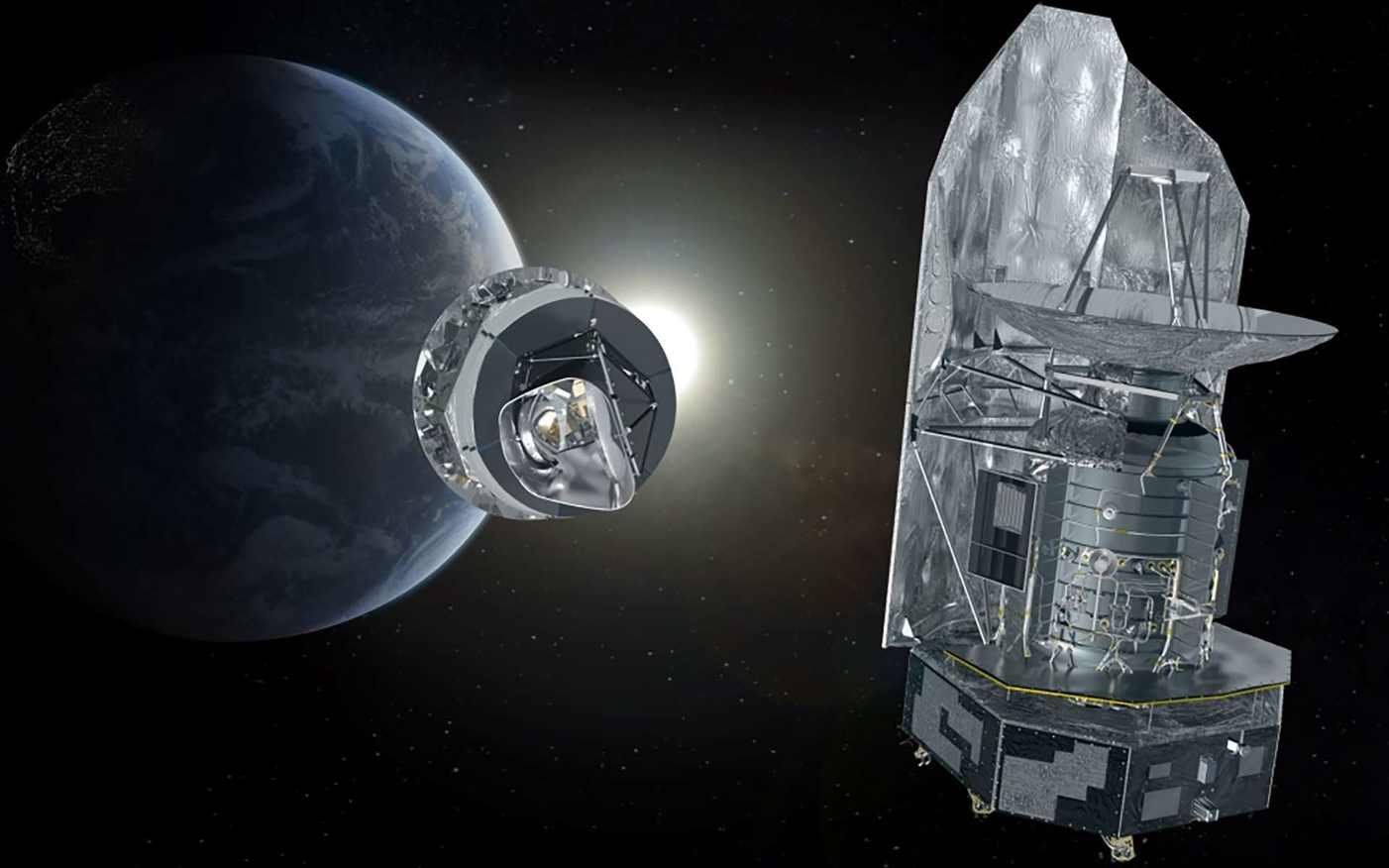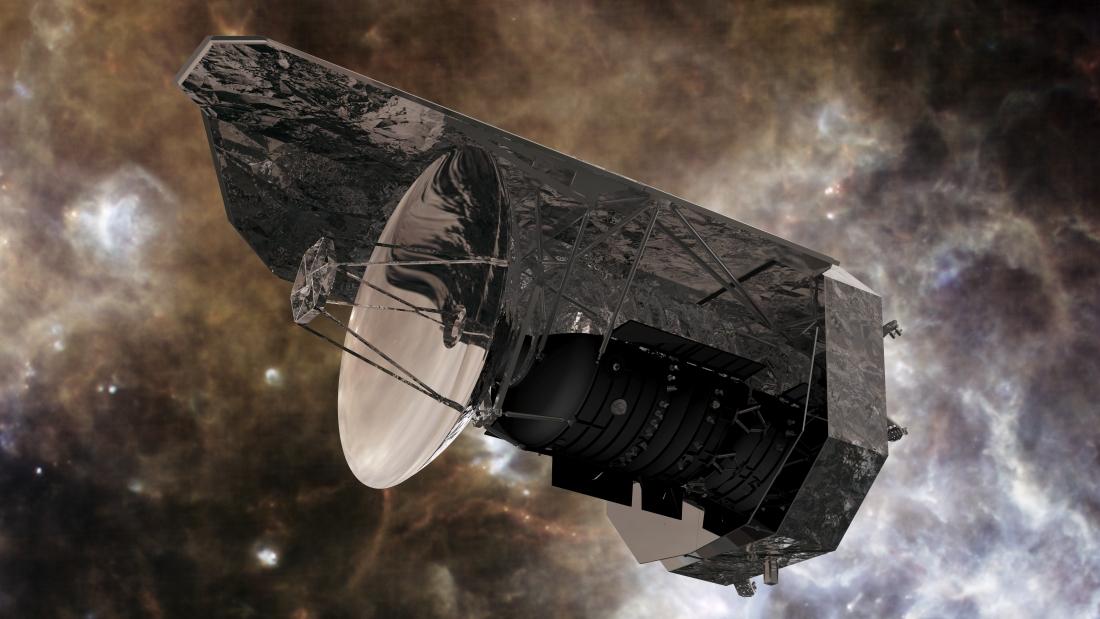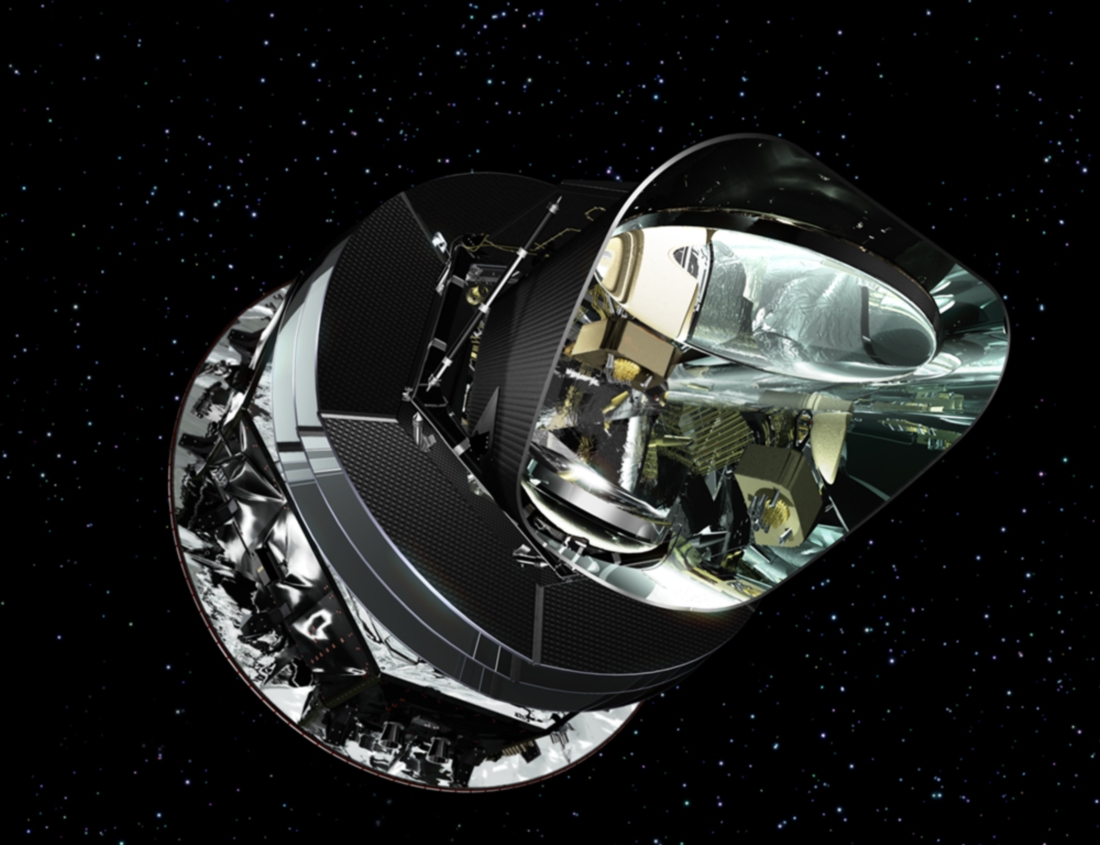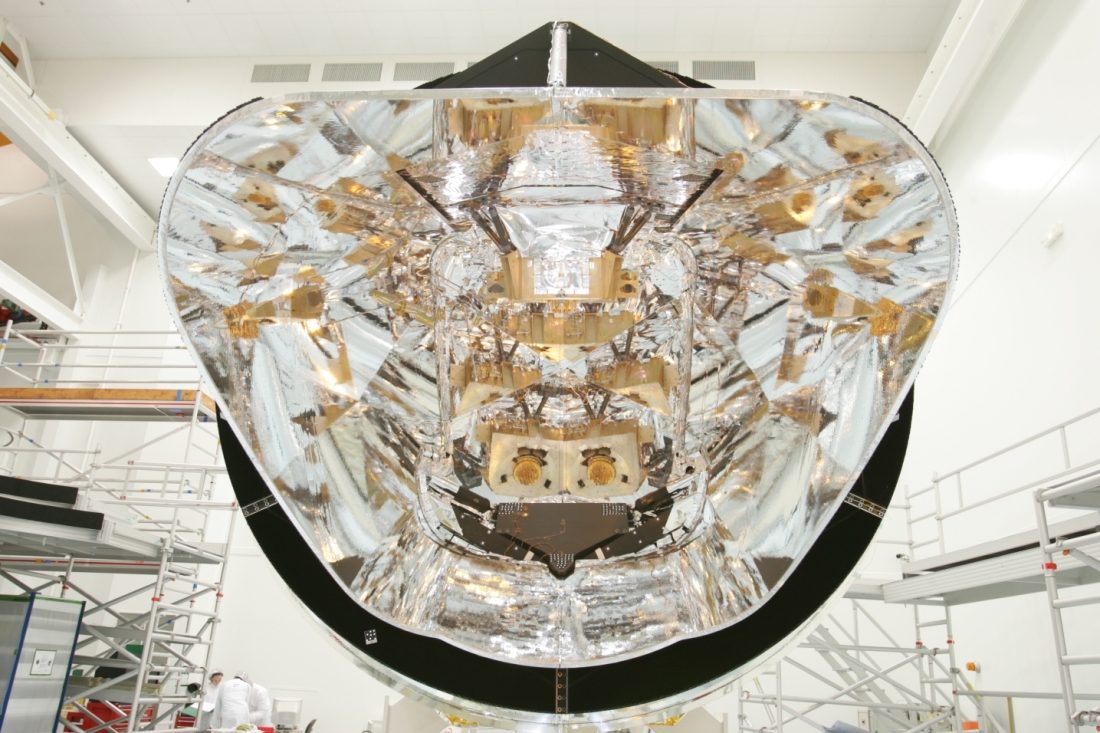Herschel & Planck 11 years on: Universe’s darkest secrets revealed
Eleven years ago, on May 14, 2009, the Herschel and Planck spacecraft blasted into orbit from the Guiana Space Center in French Guiana at 9:12 am local time (13:12 UTC).
These two space telescopes were destined to unveil some of the Universe’s most closely guarded secrets: the formation of stars and galaxies (Herschel) and the Big Bang (Planck).
A remarkable endeavor

Behind this remarkable endeavor was a team of over 500 people, as well as more than 90 companies in 17 countries. Thales Alenia Space invested all its expertise and passion in this mission and all our facilities were involved, including Cannes, Turin, Madrid, Charleroi, Milan, Toulouse, Rome, L’Aquila, Bristol and Zurich.
Herschel, Europe’s giant observatory

The Herschel space telescope was designed to observe the cold, dust-laden regions of the Universe, which lay beyond the reach of other telescopes at the time. It studied the birth of galaxies and how stars form. It observed gas and dust clouds, which would eventually become stars, as well as protoplanetary disks and complex organic molecules in the tails of comets. Herschel was also the first to study the complete spectrum of wavelengths in the far-infrared region. Herschel’s telescope was built by Airbus Defense and Space under Thales Alenia Space prime contractorship. Our company was responsible for the satellite’s platform.
The Planck survey mission

From the tiniest fraction of a second after the Big Bang to the evolution of stars and galaxies over 13.8 billion years, the Planck space telescope has given us new insights into the history of the Universe and our own Solar System. For instance, it detected a number of regions where stars are about to be born, or are just starting to develop.
Missions accomplished

Herschel and Planck completed their missions to perfection. Indeed, they went beyond the call of duty: Planck exceeded its specified mission lifetime by 18 months and Herschel by 6 months, continuing to operate until late October 2013 and late April 2013, respectively. To this day, they’re still considered two of the most sophisticated scientific spacecraft ever built in Europe.
This impressive performance earned kudos from the global science community and awards from two leading astronautics associations: 3AF in France (Association Aéronautique et Astronautique de France) in 2010 and the American Institute of Aeronautics and Astronautics (AIAA) in 2015. On the industry side, the program won the 2014 Gold Medal from the International Project Management Association (IPMA) in the Mega Sized Projects category.
For Thales Alenia Space, the Herschel/Planck program was a springboard to further success in space science. The company later won the Euclid contract and part of the Plato mission, which both involve requirements and orbits similar to Herschel/Planck.
Copyrights: © ESA - © NASA/JPL-Caltech - © Thales Alenia Space